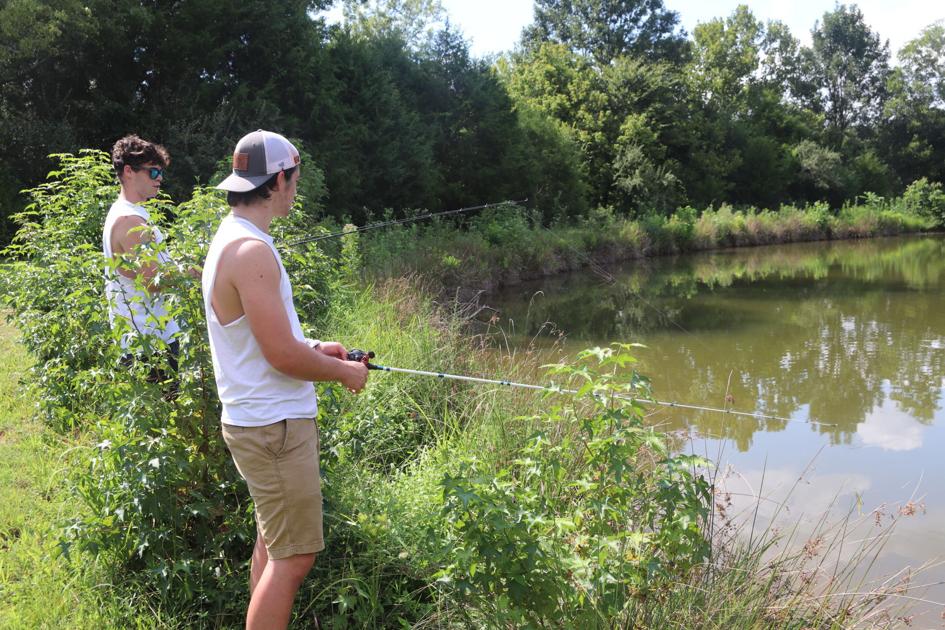
Taking a child fishing is one of the most memorable experiences for both the child and the adult.
Here are some ways you can maximize the fun and help a kid enjoy fishing as a lifelong passion:
Practice before you go. Fishing requires patience. You spend a lot more time baiting hooks and waiting than you do catching fish.
Buy a kid a simple beginner’s short pole with a closed-face reel. Don’t try to create a professional bass angler out of your 3-year-old.
Casting accuracy will be one of the most important things your child can learn, as it is this technique that will, later in life, be critical in going after the big fish.
Attach a few weights to the fishing line — with no hook for safety — and take your young child to the yard and make a bullseye with spray paint. Have the child make casts toward the bullseye, then reward the child with a treat for hitting the bullseye. This will help foster an appreciation for a basic and repeated aspect of fishing that even adults find boring.
If you are able to make casting accuracy fun, a child will have a good time fishing, even if the fish aren’t biting.
Watch fishing videos with your child. There is nothing more exciting aside from catching a fish than watching others do it. There are plenty of videos online. Try to find ones with other kids. Instilling the idea in your child that there’s always a surprise when fishing — and that there is always a bigger fish out there — will create a lifelong desire to return to the water.
Keep it simple. As an adult, you might use a baitcaster reel and spinnerbait. You might fish from a boat and use a depth-finder to find structure under the water so you can search for bass hiding spots. For a kid, it’s best to start simple.
Going to a stocked local pond and fishing with a nightcrawler and a float from the bank is an ideal way to start. With a float, the child most likely will avoid getting hooks snagged on rocks or sunken branches.
You should teach your child to gently move the bait in the water to simulate action. This will be beneficial for future instruction on how to catch bigger fish.
Start your child early on baiting hooks. Teach them to respect the sharpness of the hook, then help them guide the worm onto the hook. It’s best to put the hook through the end of the worm and slowly weave the worm onto the hook rather than creating a balled bait. Leave a little tail on the bait.
As for hooks, go with the smallest. They can and will handle bigger fish. Don’t tighten the drag on the reel fully. Leave enough drag that small fish can’t pull on it, but it will be enough to handle a larger fish. Nothing is more disappointing than a broken line while trying to land a fish.
Teach fishing basics and safety. Fishing is fun, but it can be dangerous. Explain to your child the importance of looking around before casting to make sure no one gets snagged. Tell your child stories while waiting for fish to bite. This will further foster a feeling that fishing is more than catching fish — because, if it’s only about catching fish, your child might lose interest.
You can tell fishing stories, talk about what might be under the water, etc. Anything to make the experience meaningful will help impress upon the child that fishing is fun even if you don’t catch a fish.
Drop in a few pointers without being too technical. Your child one day will graduate to an open-face reel, artificial lures and possibly fishing from a boat. If you go to a pond or lake, try to find a shady spot under a tree that is hanging over the water. Both small and large fish often can be found there. If no trees, look for areas where there is structure in the water (a branch in the water, under a dock or near a piling).
Move around. Don’t stay in one place more than 15 minutes unless you are catching fish. Exploring different fishing spots keeps things interesting, and will help the child learn, for later in life, that successful boat fishermen are always on the move, sliding in and out of coves and fishing at the points.
Make catching a fish a big deal. Be sure to photograph the fish and print it and post it on your child’s bedroom wall or on the refrigerator. Add text and graphics to it. Give your child a lasting memory.
Go to fish hatcheries. There are fish hatcheries across the state. This is a good place where your child can see lots of fish and learn how they interact. Consult a DNR representative for information about hatchlings, fishing rodeos and other activities.
Teach the rules. At many places, there are size or number limits on fish. Teach these to your child and explain why following the rules are best for the health of the fish and for the overall fishing experience. Catch and release unless you have a need to fish to supplement your food supply. If you don’t eat fish, consider donating them to a needy family or an elderly person.
August 30, 2020 at 02:00PM
https://ift.tt/2QAQ4h1
Catch their attention: Teach kids right when it comes to fishing - Index-Journal
https://ift.tt/35JkYuc
Fish
No comments:
Post a Comment